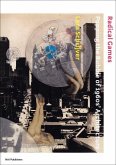There is no period in the history of the Netherlands which excites such emotion, resistance, or aversion as the decade of the 1970s. Following in the wake of the democratization wave of 1968, some regard the 1970s as a period when pluralism was possible and desirable at all levels. For others, the crowning moment of 1968 degenerated into a quagmire of public consultation and a culture of always inconclusive committee meetings. The architecture of the time, which headed off in pursuit of new definitions and forms, is similarly divisive. Though a number of architectural trajectories were driven by a devoted social engagement and a profound belief in architecture as a means of molding society, the sheer plethora of movements failed to generate a single and unanimous alternative, resulting instead in polarization and pluralism. "The Critical Years focuses on architecture, urban planning, and spatial planning from 1968 to 1982. Specific projects from the period are discussed and extensively documented on the basis of six themes, and an introductory essay considers the context in which building and planning changed so radically.
Bitte wählen Sie Ihr Anliegen aus.
Rechnungen
Retourenschein anfordern
Bestellstatus
Storno



